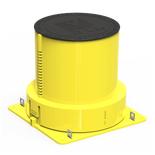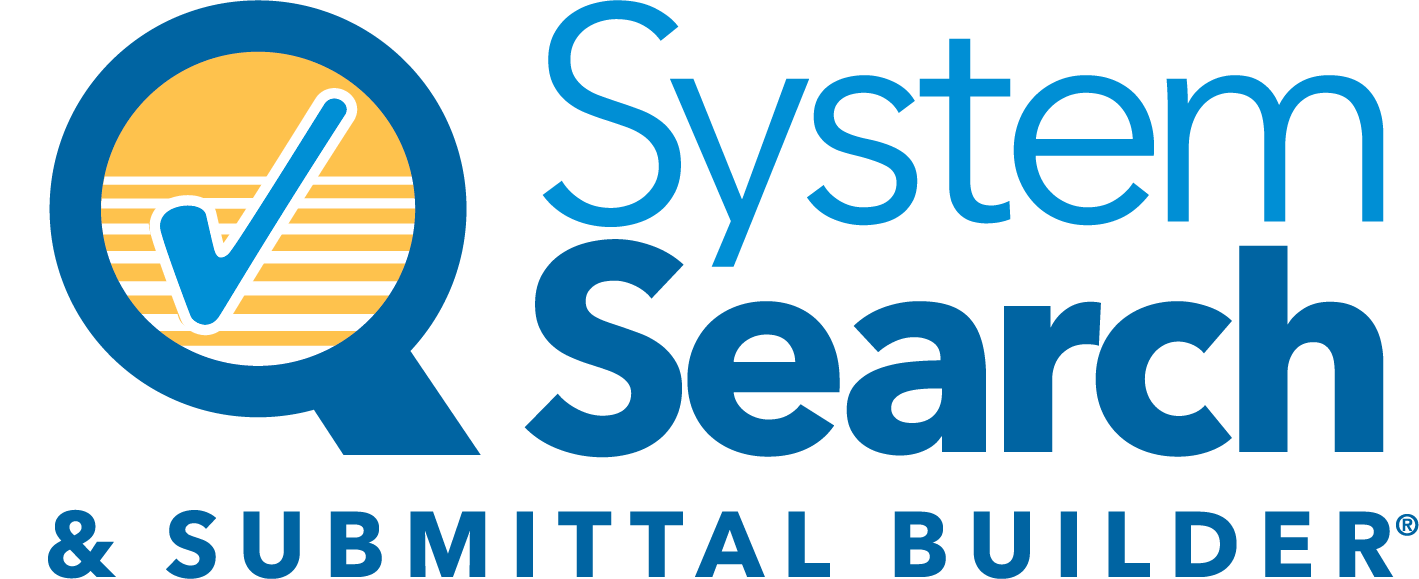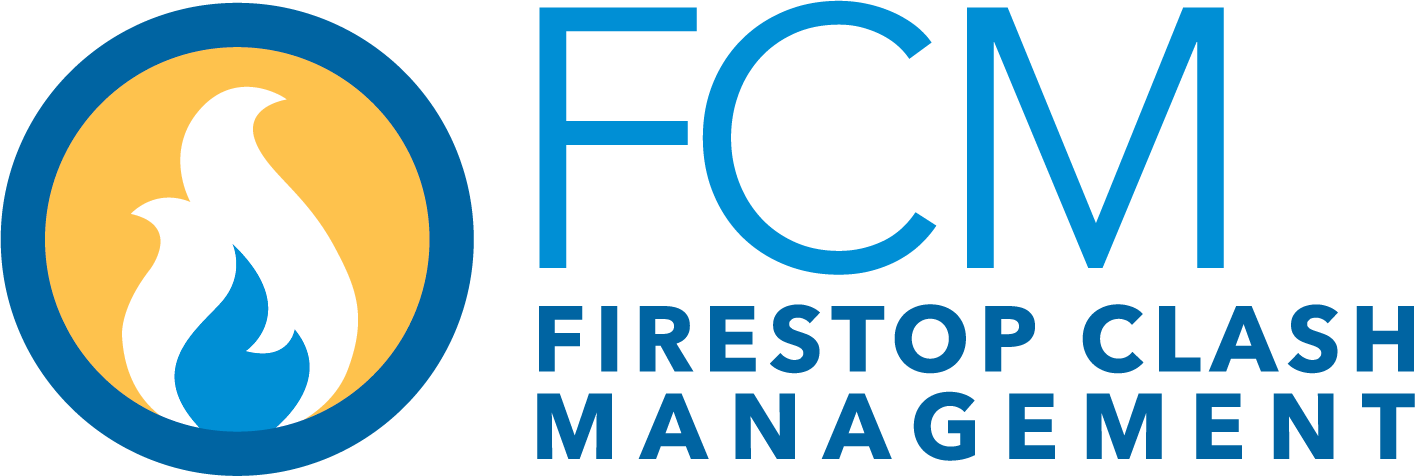The New Normal is not Normal
Current global pandemic may have a severe impact on building costs.
The world is dealing with a situation that is bizarre, rare and which is creating all kinds of new problems and challenges. Let’s look at the challenges, the problems we will overcome and we certainly hope you, family and loved ones are safe and healthy.
The current situation in the ship building industry is bringing a whole set of new challenges, such us:
- Ship delays, does the owner want his ship now? Some don’t.
- Do I have enough skilled workers? Many workers returned to their home countries to attend to their families and stay safe.
- How do I deal with shipbuilding while adhering Covid-19 social distancing restrictions? This is one we hear very often.
Shipbuilding is often literally a very busy business, why? Well when a ship is in construction, being it newbuild, repair or conversion, it’s a beehive of men and women working tirelessly around the clock to get the work done. The interior of these ships are crowded and packed with materials, areas in construction and people moving around in confined spaces.
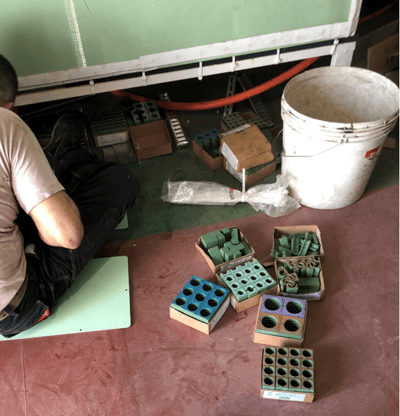
Example of a crowded work space onboard a newbuild Cruise ship. Photo credits. Knisnaw
We have seen well thought-out plans at certain yards. Where work is divided per zone and day. Traffic is one direction and teams get color codes, so they know where to work and where to transit. But finally it’s condensed to one major issue, space and amount of people. Throughout history we have seen a shift in shipbuilding where bigger ships, bigger jobs are done with less workers. Unfortunately bigger ships doesn’t mean more space inside.
In Norway for example, a continuous challenge is to find enough skilled workers, enough electricians to install cables, run piping and so on. This leads to innovative working methods and continuous search for products that reduce labor and thus costs.
At STI Marine, we see it as our main goal to look for solutions that lead to faster, easier and more cost effective installs. It’s not merely finding a competitive product, but finding a product that can be installed by 1 person, with low impact on logistics and when possible without extensive training.
Cable management – hard labor and skilled workers.
The installation of kilometers of cables onboard is a hard job and often done by muscly 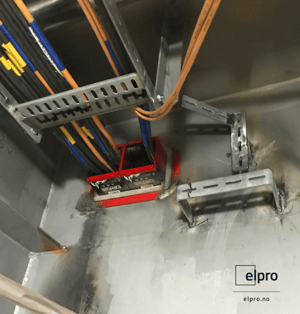 people. With many obstacles to overtake, specially fire resistant barriers such as bulkheads and decks. Cable penetrations are often A-60 and require special attention, which is often left to specialists that install passive fire protective products in the form of cement, foams, intumescents, or multi block frames. Hoping that all cables are in place and none with malfunctions or missing, that is when the hard job starts and a traditional A-60 cable passage in the industry with a size of 250x400mm would take 1 worker between 4-8 hours to firestop. In newbuild projects some fire protective solutions have a 30% re-work rate, meaning that up to 30% of the A-60 cable passages are broken open to add or change cables. This is a huge amount of energy, time and money lost. This adds up to more workers hours, transit times and logistical work inside a ship.
people. With many obstacles to overtake, specially fire resistant barriers such as bulkheads and decks. Cable penetrations are often A-60 and require special attention, which is often left to specialists that install passive fire protective products in the form of cement, foams, intumescents, or multi block frames. Hoping that all cables are in place and none with malfunctions or missing, that is when the hard job starts and a traditional A-60 cable passage in the industry with a size of 250x400mm would take 1 worker between 4-8 hours to firestop. In newbuild projects some fire protective solutions have a 30% re-work rate, meaning that up to 30% of the A-60 cable passages are broken open to add or change cables. This is a huge amount of energy, time and money lost. This adds up to more workers hours, transit times and logistical work inside a ship.
As explained earlier at STI Marine the goal is always to find solutions that lead to fast installation, with no forceful or destructive opening of passages if cables need to be added. The solution that the founder Mr. James P. Stahl Senior invented 15 years ago is the self-sealing cable transits EZ-Path®, this cable transit consists of a single piece transit with no moving parts, always remain sealed, there is no risk that they would ever be left unsealed like traditional cable transits, thereby eliminating compliance issues
How does this lead to cost saving.
In most newbuild projects we see the EZ-Path® Marine Cable Transits, being installed very early in the building process, so when the rough steel work is done. This allows to have enough space to maneuver, installation can be done by one worker and spot welding if possible or screwing takes a matter of 15-25 minutes of work.
EZ-Path® Marine Cable Transits can be installed during deck to block construction.
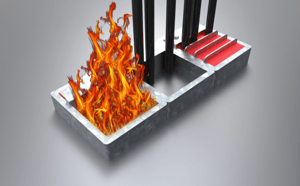
Open multi cable block frame during construction.
The transits are packed as a single item without loose parts, so logistic wise this saves time and reduces waste. As soon the transits are installed and the bulkhead or deck is properly insulated the cable passage is A-60, even if no cables have yet been installed. This reduces fire passing from one compartment to the other in the event of a fire during construction.
Open multi cable block frame during construction.
Then the cables can be easily pulled through the transits, either one cable at a time or by cable bundles.
All in all a product that has a big impact on working hours, logistics movements and thus the impact it has on your workers. Reducing the amount of traffic onboard and making it simpler in these challenging times to apply social distancing rules for example.
Costs calculations show comparisons with traditional multi block frame 180x120mm with a EZ-Path® Marine Cable Transit type MDM150Y, DNV-GL approved. The amount of time to create a fire protective barrier for A-60 is about 6 hours. Which includes welding in the frame, running cables and setting blocks. That work adds up to a cost of €192,- for 6 man-hours* while comparing with a EZ-Path® Marine Cable Transit installation of the MDM150Y device would be about 45 minutes at cost of €24,- to complete the job.
Interested in the full report or wish to have us calculate your cable transit needs based in cutouts or cable amounts? Contact me please rwansink@stimarine.com
*man-hour rate based on European average of €32,- per hour. Material costs are not included in this calculation.

